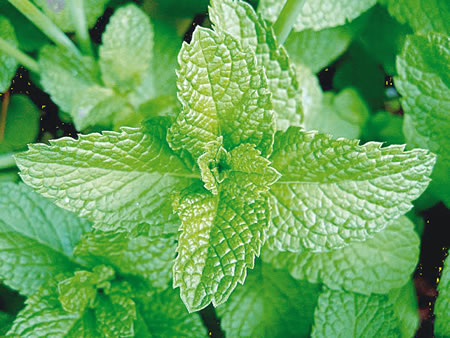
Schistosomiasis is a poorly understood tropical disease that is estimated to affect over 250 million people, with approximately 779 million people at risk globally. Over 90 percent of these individuals live in sub-Saharan Africa.
Human interaction with freshwater sources can spread the parasitic fluke, or worm, that causes the sickness. The fluke resides in the bloodstream. Freshwater snails live in lakes, rivers, streams, and other bodies of water; they discharge the parasite’s infectious stage.
Depending on the parasite type, an infection might result in bladder cancer, severe liver and spleen damage, bleeding, and difficulties urinating.
Treatment for high-risk populations, like school-age children and fishermen, is the primary emphasis of the World Health Organisation (WHO). The degree to which water interaction can account for a person’s increased risk of infection is unclear.
However, the water contact activities people engage in, such as fishing, bathing, and doing laundry, vary between age groups and genders, and different activities carry different risks of contracting the infection. Also, the infection depends on environmental conditions that influence the number of snails in the water.
Researchers, in a study published in Scientific African, suggested that the cultivation of Ocimum gratissimum (scent leaf) and Andrographis paniculata (king of bitters) along river banks is a cheap, effective, and eco-friendly control for blood fluke in endemic areas.
The study reported that O. gratissimum and A. paniculata elicited varying degrees of anti-schistosomal properties at all concentrations against the infective larvae of blood flukes.
Both contain similar constituents capable of killing the infective larvae of blood fluke in less than an hour, and they may also be useful for the morbidity and symptom reduction of schistosomiasis.
Also, they reported that free-swimming larvae of blood flukes were more susceptible to the toxic effects of O. gratissimum leaf extracts than A. paniculata at all concentrations.
Ocimum gratissimum, commonly known as African basil, scent leaf, or wild basil, is a plant with a rich history of medicinal use in various cultures. It is often used in traditional medicine to treat infections, wounds, relieve gas and bloating, and conditions such as diarrhoea, dysentery, stomach cramps, and arthritis.
Andrographis paniculata, commonly known as “King of Bitters” or “Kalmegh,” is an herb widely used in traditional medicine, especially in Asian countries, to treat common colds, influenza, arthritis, inflammatory bowel disease, boost immunity, urinary tract infection, and other inflammatory disorders, as well as promote overall liver health.
When people come in contact with infected water, the parasite’s larval forms—which are discharged by freshwater snails—pierce their skin and infect them. The larval forms of the parasite migrate into the blood vessels and anchor on the blood vessels that supply the liver.
In the process, the parasites rearrange their tissues, create reproductive organs, mate, and mature into adults once they reach the liver. They produce hundreds to thousands of eggs daily, many of which are not expelled through waste and become lodged in organs such as the liver.
Suggested man-made compounds (molluscicides) that kill water snails, like niclosamide, are costly, hazardous to non-target animals, and may cause snail resistance in fish, amphibians, and crustaceans.
Given these shortcomings, it is important to search for eco-friendly plants like O. gratissimum and A. paniculate capable of killing cercariae (the infective stage of schistosomiasis) as soon as they are shed.
To determine if scent leaf and Andrographis paniculata (king of bitters) can keep schistosomes away from snails, the researchers tested different concentrations of the extracts of these medicinal plants on the larval forms of the parasite over two hours under laboratory conditions.
The extracts killed the parasite’s larval stages in a way that was dependent on both dose and time. Scent leaf and king of bitters extracts showed 100 percent mortality at 100 milligrammes per millilitre.
The bitter extract’s least effective concentration, 25.0 mg/mL, took 115.03 minutes to work and resulted in 50% mortality in the blood fluke larvae.
They claim that because these plant extracts are effective at killing blood fluke larvae, more research is required to identify the precise active component causing the anti-schistosomal properties. This will help the extracts become therapeutic medicines.
In the past, it has been jointly and independently documented that some chemicals found in smell leaves and king of bitters are harmful to blood fluke and its vectors, such as freshwater snails.
Furthermore, a variety of different plants have been shown to possess the ability to disrupt the life cycle of these worms, hence hindering the intermediate snail host and larval stages of blood fluke.
A plethora of such plants include Jatropha elliptica (Lapalapa in Yoruba), Sanguinaria canadensis (bloodroot), Curcuma longa (turmeric), Plectranthus neochilus (Nchu-anwu in Igbo or Efirin ajase in Yoruba), garlic oil, and Hemerocallis fulva.
In addition are Schefflera vinosa, Cleome droserifolia (Kumbi-burra in Hausa or Ikanekane in Yoruba), Clerodendrum umbellatum (Bukutu in Hausa and Ewe esin in Yoruba), Artemisia annua, Baccharis trimera, Persea Americana (avocado), and Allium sativum (garlic).
Additional medicinal plants include Peltophorum africanum (Ijele in Igbo and Gimbiya in Hausa), Ziziphus mucronata (Iyeye in Yoruba and Nwokolo in Igbo), Acacia karroo, Maytenus senegalensis (Azeigwe in Hausa and Ayan in Yoruba), and Abrus precatorius (Oju-ologbo in Yoruba and Goro agogo in Hausa).
Read Also: Cervical Cancer: Ekiti govt begins HPV vaccination May 27
Source: